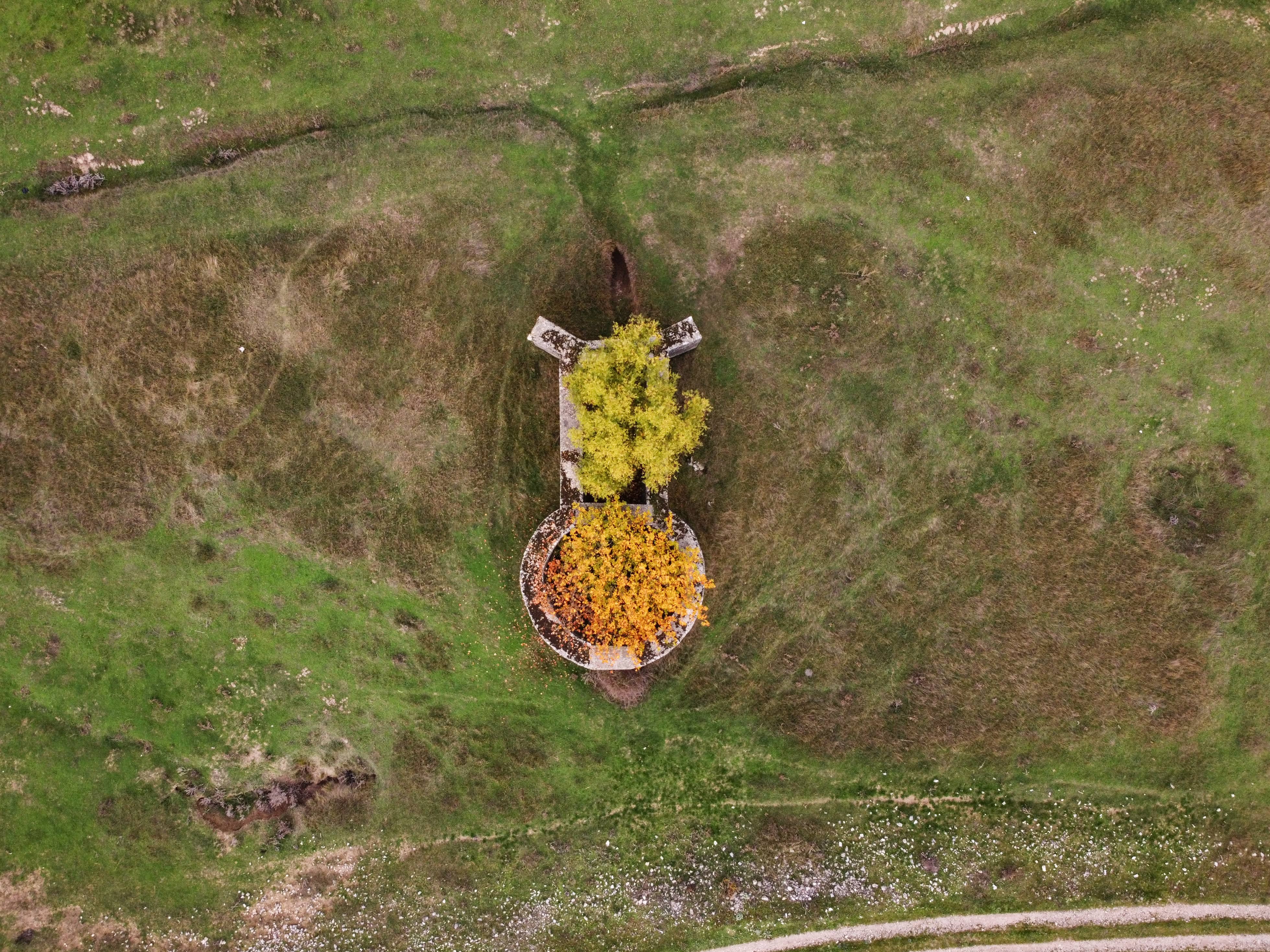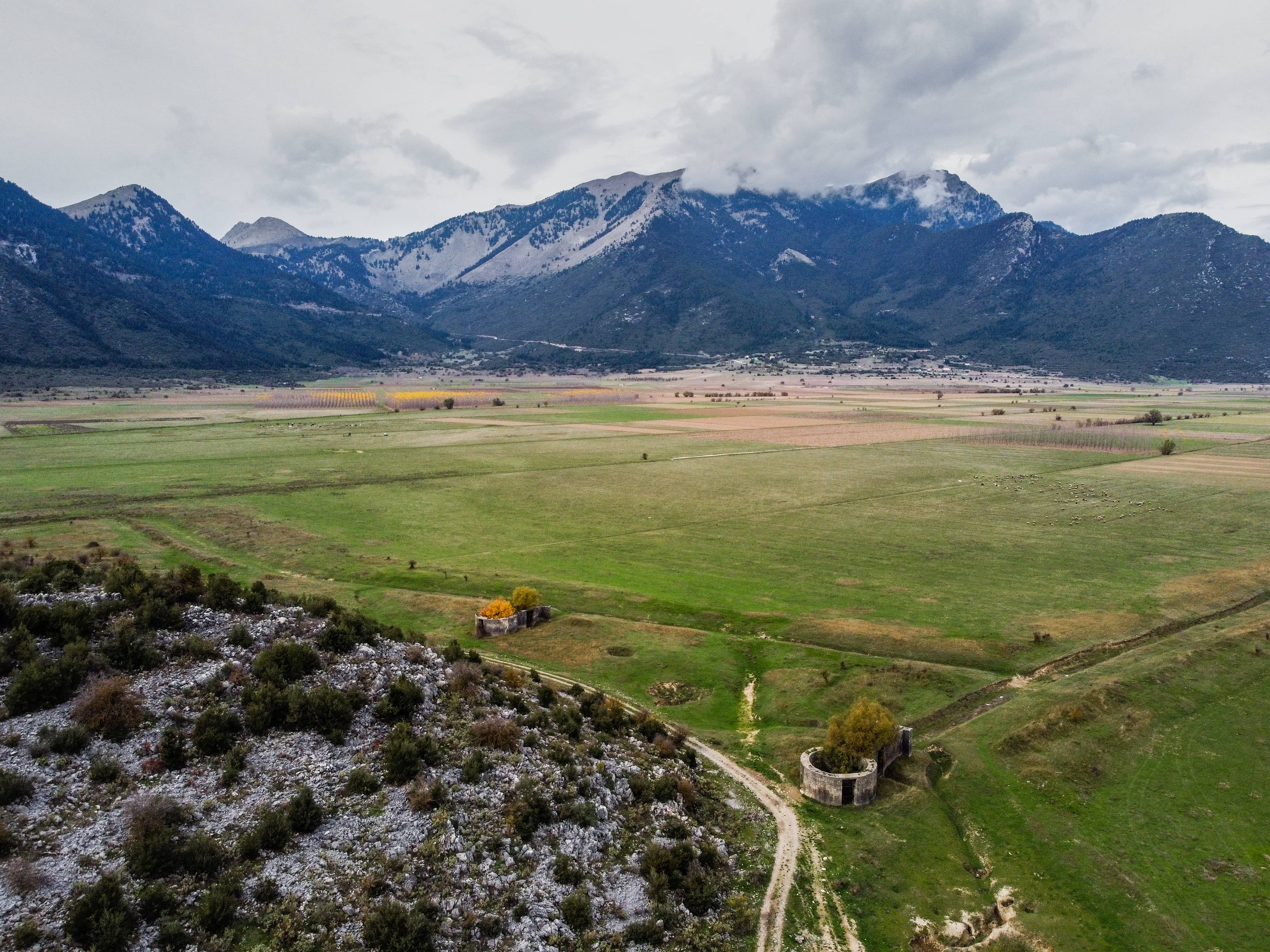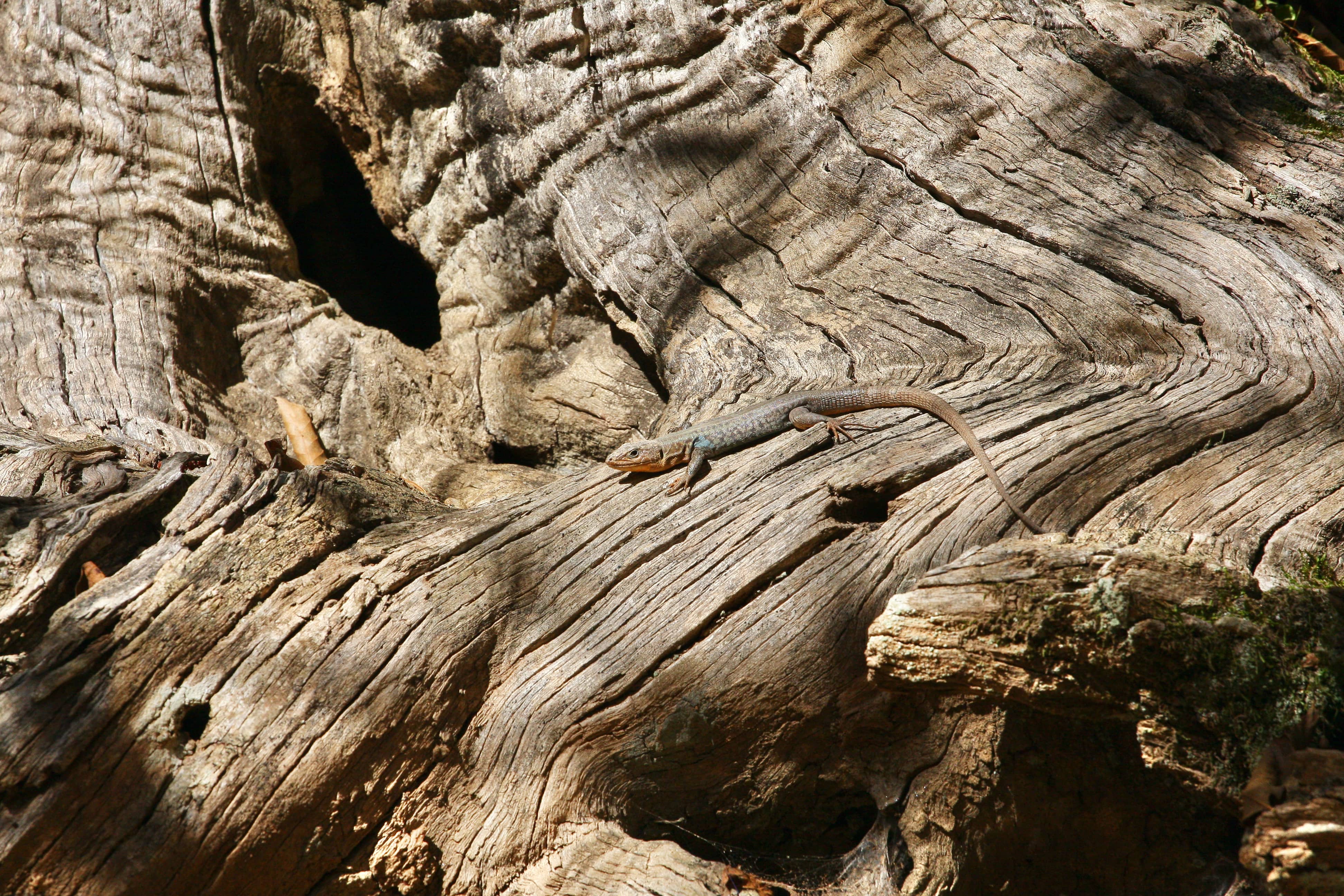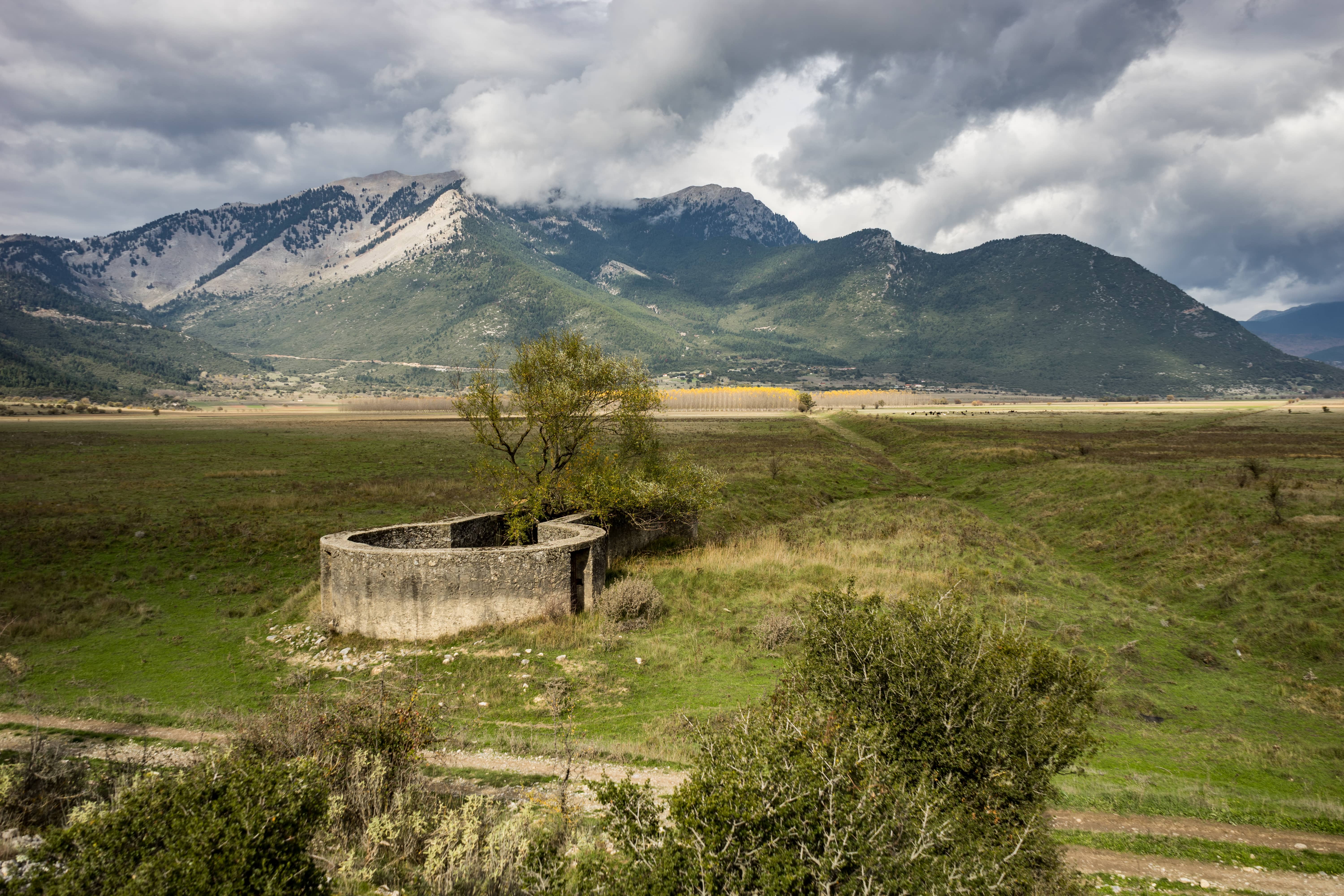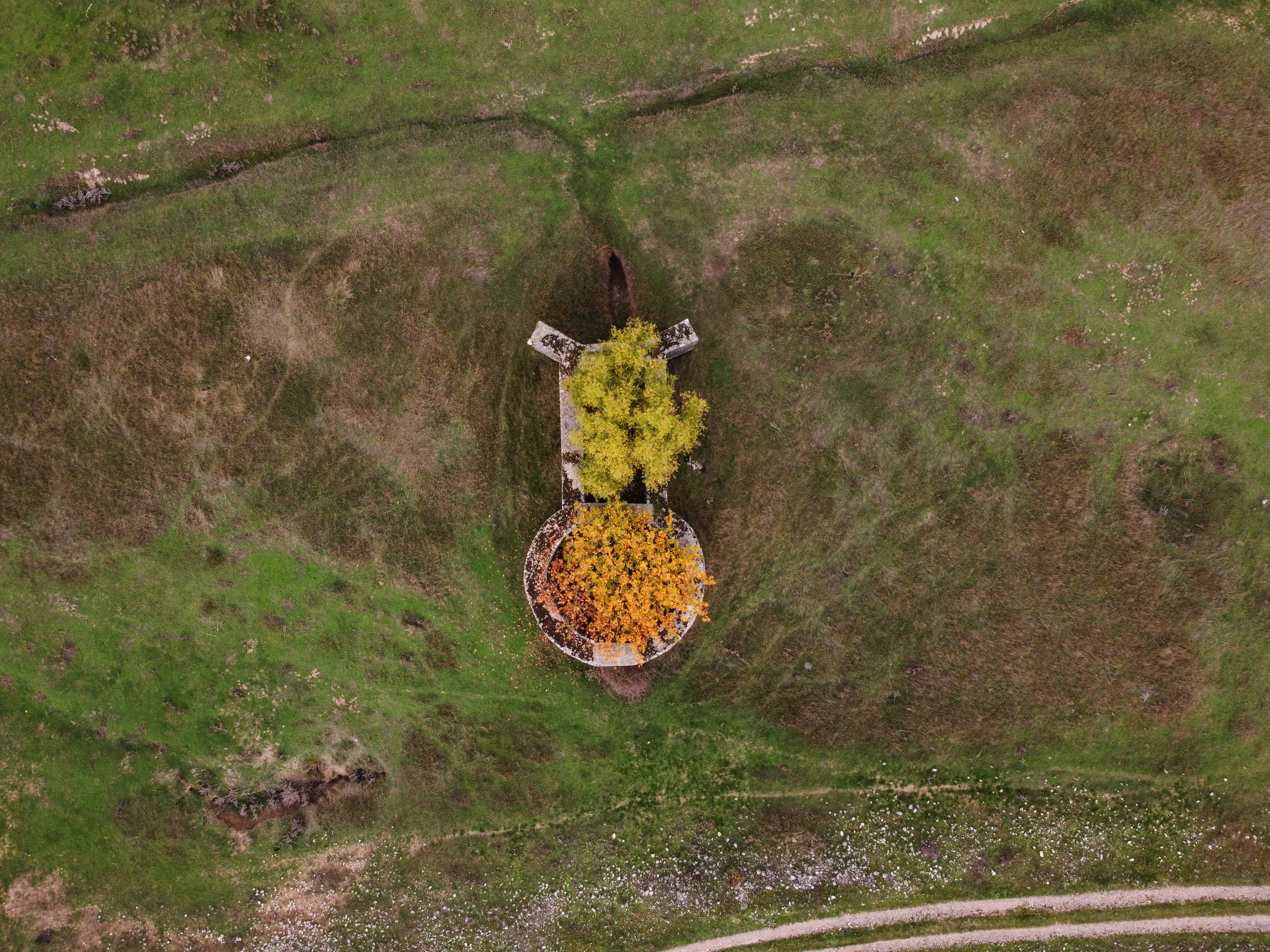HERCULES THE PLUMMER?
Areas like Feneos area, dominated by limestone, are characterized by impressive karst landforms, such as sinkholes. The Feneos’ sinkholes seem to be related to several mythological elements. More specifically, according to one of the myths, Hercules is said to have created the sinkholes at the foot of the mountains that delineate the polge of Feneos in order to remove the stagnant waters of the polge, coming mainly from the Olvio River.
GEODIVERSITY
In Feneos area, limestones prevail, which are rocks that are easily dissolved by the action of water. Rainwater enriched with carbon dioxide (CO2) (from the atmosphere and the soil) reacts with the carbonates of the limestone, dissolves parts of the rock and expands existing cracks creating cavities (openings). The dissolution of limestone by the action of water is called karstification and leads to the formation of geomorphs, which are called karstic forms. Such geomorphs are the Feneos’ polje and sinkholes.
Poljes are large closed karstic flat valleys, surrounded by mountains. Their area varies from a few to hundreds of square kilometers, while they are found at different altitudes from sea level up to over 1000 m.
Sinkholes are conduit-shaped karst openings that extend almost vertically into the carbonate rocks to form complex conduit systems that reach to the ground surface. The surface water that flows to the sinkholes moves through the groundwater conduits to greater depths and in various directions.
In the Feneos’ polje, periodically the sinkhole openings were filled with materials and sediments from the surface, preventing thus the drainage of surface water and as a result a lake (palaeolake) was formed. Then, through the unblocked sinkholes the water was drained, turning the polje into a fertile plain. This phenomenon has been confirmed by the scripts of ancient and modern travelers and writers.
BIODIVERSITY
The fauna of the area of Feneos includes important amphibians and reptiles protected by the Greek and/or international legislation. Among them are the Fire salamander Salamandra salamandra, the European tree frog Hyla arborea, the Common toad Bufo bufo, etc.


